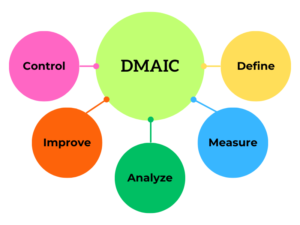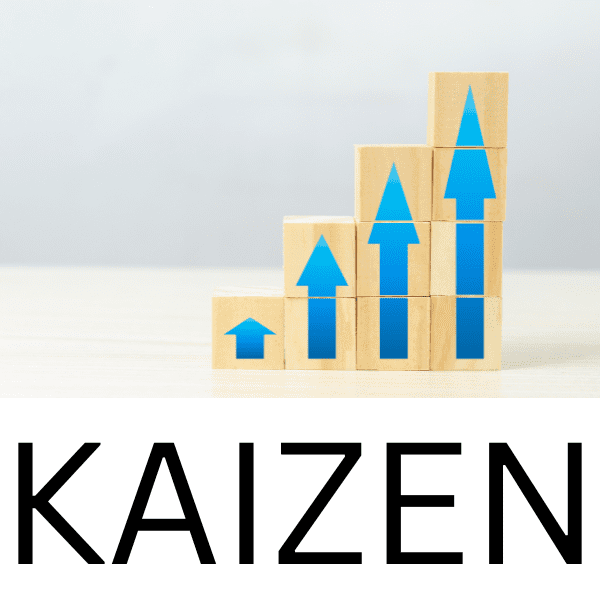
In today’s dynamic business landscape, stagnation is a recipe for disaster. Leaders are constantly pressured to optimize processes, reduce waste, and deliver exceptional results. Enter DMAIC, a powerful framework that empowers organizations to achieve just that.
DMAIC, an acronym for Define, Measure, Analyze, Improve, and Control, is a structured, data-driven approach to continuous improvement. It’s a core principle of Six Sigma, a widely adopted methodology for quality management, but its applicability extends far beyond. Let’s delve into each stage of DMAIC and explore how it can transform your organization:
1. Define: Charting the Course
The first step is critical. Here, you clearly define the problem or opportunity for improvement. This involves gathering stakeholder input, outlining customer needs, and selecting a specific, measurable process for optimization. A well-defined project scope ensures everyone is aligned and prevents chasing after elusive goals.
2. Measure: Establishing the Baseline
Data is the lifeblood of DMAIC. In this stage, you meticulously collect and analyze data related to the chosen process. This could involve cycle times, defect rates, customer satisfaction scores, or any metric relevant to your project goals. By establishing a clear baseline, you can measure the effectiveness of any implemented changes.
3. Analyze: Unveiling the Root Cause
Here’s where the detective work begins. Armed with data from the measurement phase, you delve into root cause analysis. Techniques like cause-and-effect diagrams (fishbone diagrams) and statistical analysis help identify the factors most significantly impacting your process. Don’t settle for superficial explanations; dig deep to uncover the true culprit behind inefficiencies.
4. Improve: Engineering Solutions
With a clear understanding of the root cause, it’s time to brainstorm and implement solutions. This is where creativity and collaboration come into play. Consider proven methodologies like Lean to eliminate waste and streamline operations. Pilot test your solutions on a small scale to assess their effectiveness before full-scale implementation.
5. Control: Locking in the Gains
Congratulations! You’ve implemented your solution. But the journey doesn’t end here. The control phase focuses on monitoring the improved process and ensuring the gains are sustained. Develop control plans, track key metrics, and be prepared to make adjustments as needed. Remember, continuous improvement is just that – continuous.
The DMAIC Advantage
DMAIC offers a multitude of benefits for organizations seeking to achieve operational excellence. Here are just a few:
- Data-driven decision making: DMAIC replaces gut instinct with cold, hard data, leading to more effective solutions.
- Reduced waste and improved efficiency: By streamlining processes, you eliminate unnecessary steps and optimize resource allocation.
- Enhanced customer satisfaction: Improved processes translate into faster delivery times, fewer errors, and a more positive customer experience.
- A culture of continuous improvement: DMAIC fosters a data-driven mindset within your organization, encouraging employees to constantly seek better ways of doing things.
In Conclusion
DMAIC is not a magic bullet, but it’s a powerful tool that can equip your organization to navigate the ever-changing business landscape. By systematically identifying problems, analyzing root causes, and implementing data-driven solutions, you can unlock significant improvements in efficiency, quality, and customer satisfaction. So, are you ready to tame the tiger of inefficiency and unleash the power of continuous improvement? Embrace DMAIC and watch your organization soar.
Matt Styles
Matt Styles is the founder and voice of The Stylish Leader enterprise. Empowering the next generation of leaders, Matt is focused on challenging minds, inspiring hearts, and helping others achieve their highest potential for success.

- By: Matt Styles
- Date: July 18, 2024
Kaizen: How To Supercharge Your Success
- 3 min read

- By: Matt Styles
- Date: July 15, 2024
Lean Culture 101: How To Organize A Framework That Thrives
- 7 min read

